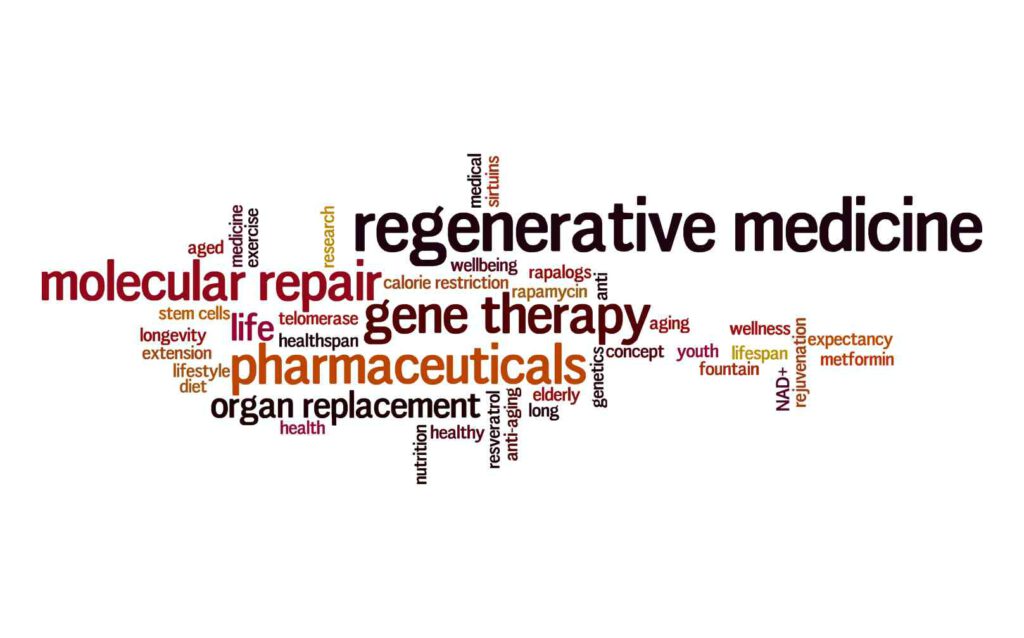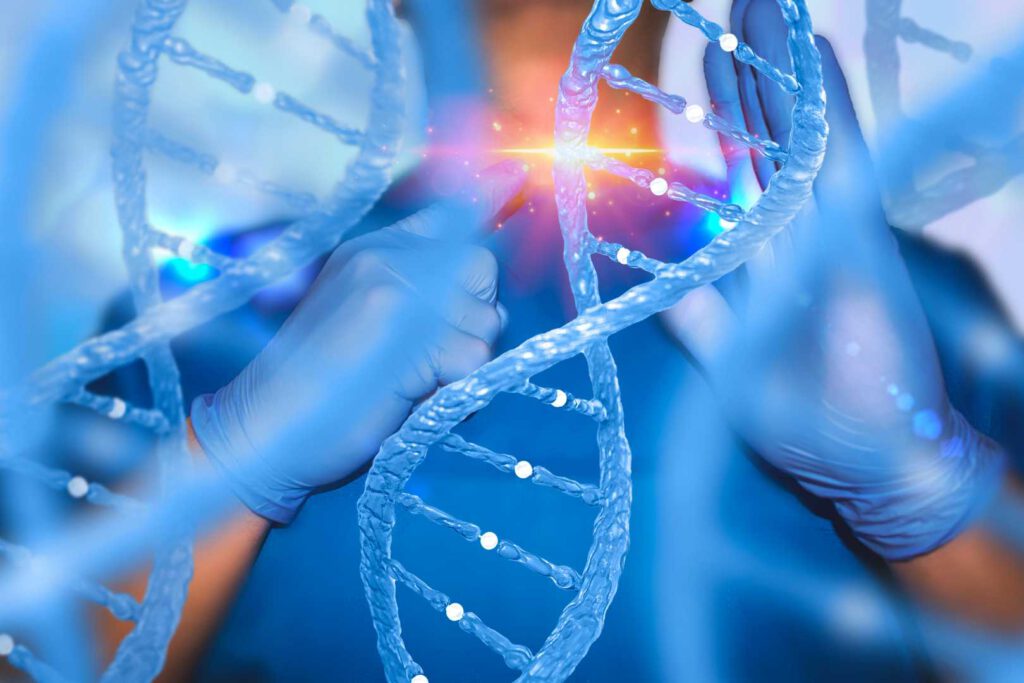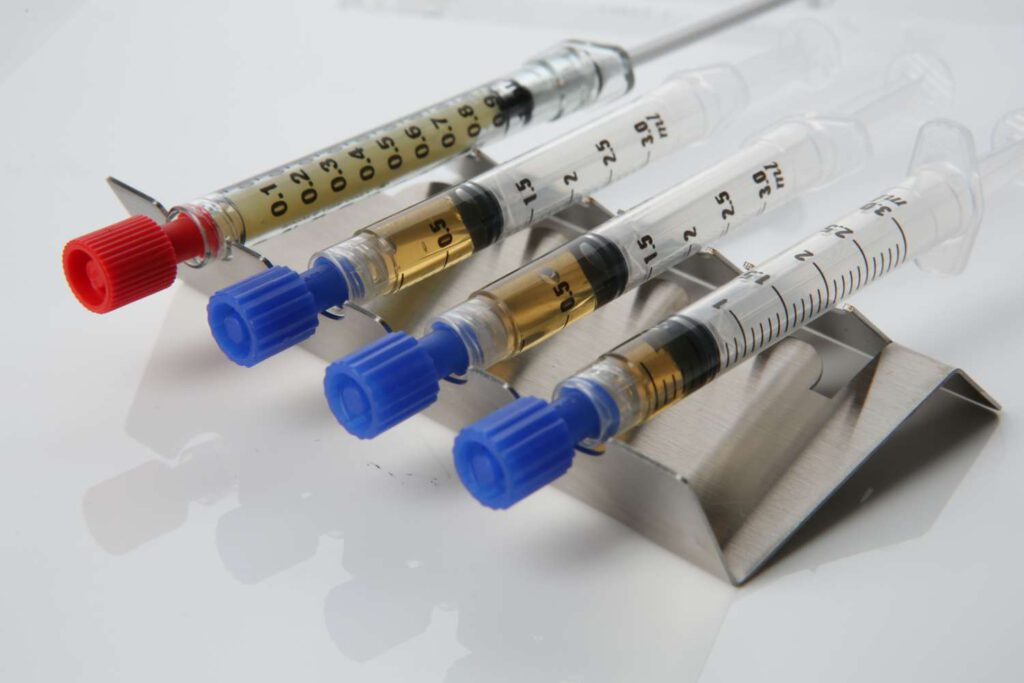Regenerative Medicine
Regenerative medicine belongs to an area of medicine with the strongest and most exciting developments and potential. With new approaches in the treatment of previously incurable diseases such as diabetes, cancer, autoimmune diseases, respiratory diseases, coronary artery heart disease, neurological diseases, as well as degenerative conditions related to ageing; the growth of new tissues and artificial organs with regenerative medicine are bringing about major changes in medicine for the future.
Regenerative medicine is a very young and promising field of modern medicine with the goal of moving away from a „reparative“ form of medicine to a „regenerative“ one, thereby achieving more sustainable improvements for patients.
Regeneration literally means „re-generation“. In medicine, this term refers to the functional and morphological restoration of a damaged tissue or organ through the formation of new cells. From the Latin: re – back, generare – generate.

Complete healing without permanent scars or damage is called REGENERATION “restitutio ad integrum”
Regeneration can be complete (restitutio ad integrum) or incomplete (reparatio). The regenerative capacity of human tissues is determined by the ability of their cells to divide. As cells differentiate, the regenerative capacity of a tissue decreases.
Repair. In medicine, the term „reparatio“ means the healing of damaged tissue by scarring or granulation. There is a difference between repair „reparatio“ and regeneration „restitutio ad integrum“, which means the complete restoration of tissue function without further damage.
Healing is the process of restoring health to an unbalanced, diseased or damaged organism. Healing involves the repair of living tissues, organs and the biological system as a whole and the resumption of normal functioning. This could be supported, increased or fixed by therapeutic measures.
Individualized Medicine
Individualized or personalized medicine means using a patient‘s specific information to achieve greater diagnostic precision, identify better-tailored and more effective therapeutic interventions, and ultimately achieve a faster and longer-lasting cure. These types of therapies involve a reduced likelihood of side effects and earlier disease intervention than was previously possible.
Individualized screening, guided by artificial intelligence (AI) and biomarkers, can optimize the transformative potential of regenerative medicine, according to a Mayo Clinic study. The paper, published in Biomarkers in Medicine, maintains that using new scientific tools to match the right biotherapeutics to the right patient ushers in the era of achieving tailored regenerative care.
Conversely, without targeted patient selection, biological and genetic differences lead to variable outcomes from regenerative procedures. Some patients are super responders, while others show limited benefit.
“Determinants separating success from failure in achieving disease rescue has remained largely unknown,” says Andre Terzic, M.D., Ph.D., a Mayo Clinic research cardiologist, and senior author on the study. “Biological diversity among recipients, unpredictable bio-therapeutic efficacy and inconsistent care delivery all underscore recognized challenges in regenerative care. Efforts to upgrade regenerative therapy outcomes are ongoing.”

Autologous Blood Concentrates
Major developments in regenerative medicine based on autologous tissues and cells have occurred since the beginning of the 20th century. Reconstructive and orthopedic surgery techniques use the patient’s own tissues, such as skin, fat, tendon or bone, to treat trauma or inherited defects. More recently, the idea of using cells or growth factors to stimulate tissue regeneration at the site of the lesion has emerged. Autologous blood injections have received considerable attention in recent time and are being employed for a variety of indications.
Platelet-Rich Plasma (PRP) therapy has gained popularity since the earliest reports of its clinical use in the 1980s and 1990s. David R. Knighton described the first use of “locally acting growth factors obtained from human platelets and applied topically”, highlighting how interesting it may be to isolate growth factor-secreting plasma cells from whole blood to induce tissue regeneration, particularly in chronic wound healing.
Platelet-Rich Plasma (PRP) or Autologous Conditioned Plasma (ACP) is plasma with a high concentration of platelets, which contains a large amount of proteins which enhance the body’s natural healing response.
Autologous Conditioned Serum (ACS) is also a blood product developed in the 1990s in an attempt to generate an injectable material as a novel therapeutic for Osteoarthritis.
Although ACS, PRP, and ACP have more cytokine and growth factor density than whole blood, their inclusion rates are different. ACS comprises IL-1Ra and anti-inflammatory cytokines (IL-4, IL-10, IL-13), whereas PRP and ACP contains VEGF, IGF-1, IGF-2, FGF, and HGF.

Stem Cell Based Therapies
In the past twenty years the treatment using new biotechnologies which focus on amplifying the body’s natural healing properties to manage and modulate inflammation and to reduce pain has been a growing field of research. Such applications, often using mesenchymal stem cells (MSCs), have been shown to be especially useful in orthopedics, sports medicine, and regenerative medicine.
Many techniques and treatments have been assessed including stem cells or cell therapies, autologous blood-based products such as Platelet Rich Plasma (PRP) and Autologous Conditioned Serum (ACS). Stem cells and the novel therapeutic approach called “stem cell-based cell-free therapy”, are often reliant on the autocrine production of growth factors, no modulators, and other bioactive molecules stored in extracellular vesicles (exosomes) which can be isolated and used instead of cells. However, if the origin of exosomes is represented by embryonic or fetal cells, then there are many ethical and legal issues to overcome.
Autologous harvesting and priming of cells have many technical and methodological complexities and the long-term efficacy of the resulting exosomes is questionable if their use is not repeated at regular intervals. When using MSCs, it has been proposed that the systemic paracrine modality is sufficient to produce therapeutic responses in some situations, while under other circumstances a cell-cell contact may be required. Stem cells are often infused intravenously, but cells administered in this manner may experience rapid clearance or may be trapped in pulmonary capillary beds, which may explain their limited efficacy in some instances. There has also been work on the use of regenerative medicine technology in the treatment of chronic pain, which includes the concept of neuro immune regulation in pain relief.

